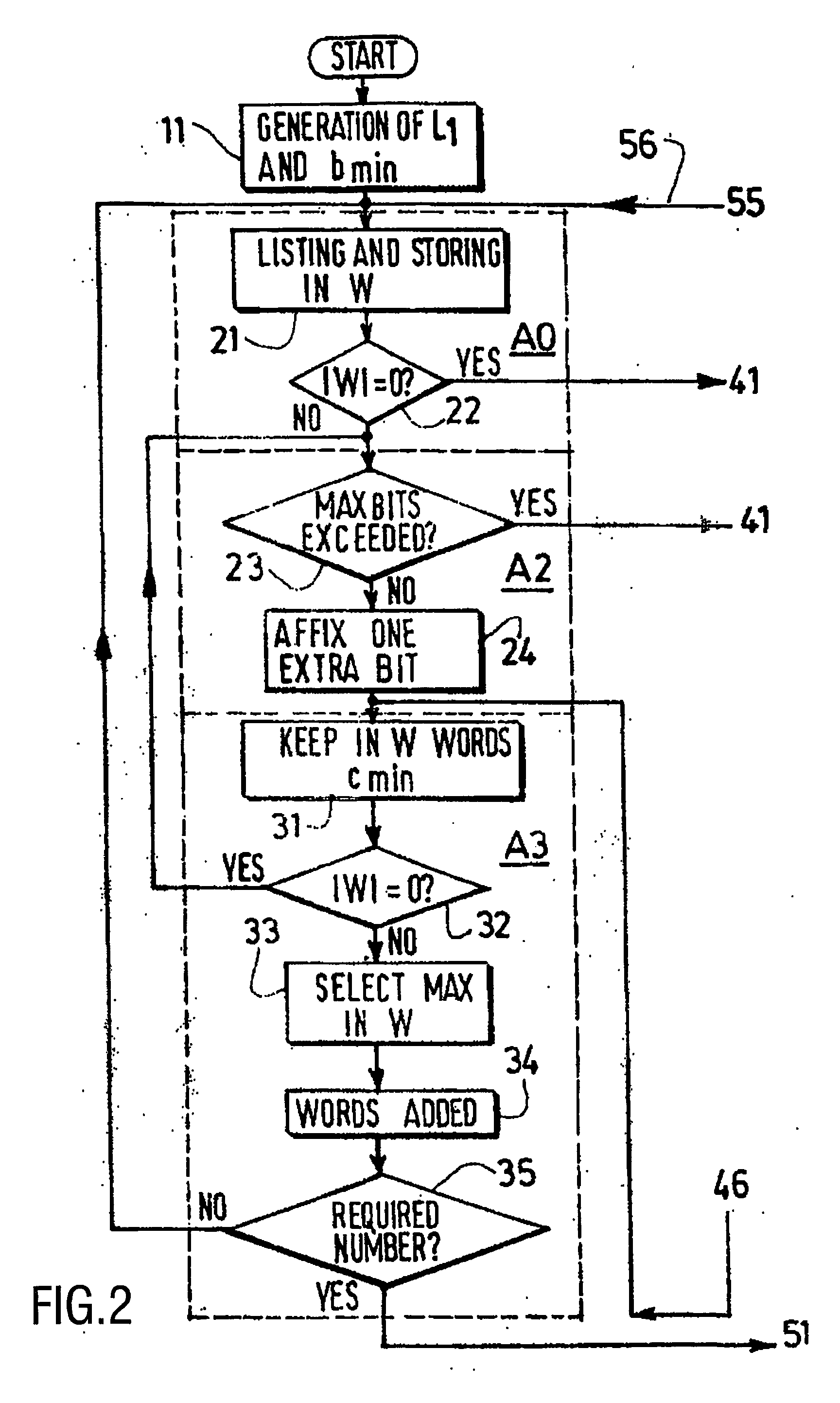Method and device for building a variable-length error-correcting code
a technology of error correction and variable length, applied in the field of building variable length error correction codes, can solve the problems of affecting the performance of best codes, and consuming a lot of time, so as to achieve the higher ls levels more quickly, improve compression gains, and improve the effect of computation tim
- Summary
- Abstract
- Description
- Claims
- Application Information
AI Technical Summary
Benefits of technology
Problems solved by technology
Method used
Image
Examples
Embodiment Construction
[0065] Considering the results of some simulations made on the basis of the above-described “Ls optimization” method, it appears, as indicated above, that, when updating the Ls parameter for a new search, no advantage is taken from eventual previous researches. According to the invention, it is therefore proposed to try to establish a semi-recursive way to reach higher Ls levels quickly, in order to find better compression gains for an acceptable computation time.
[0066] More precisely, it is proposed to keep in memory the beginning of the best VLEC structure of each Ls, and to re-use it within the search with the next Ls′=Ls+1 value. As Ls rises, the size of the kept beginning increases accordingly, in order to avoid a resulting increase of the free length that would exponentially impact on the computation time. In fact, simulations show that, when Ls increases, the beginning of each code remains constant for more and more lengths, which justifies to use the pre-computed informatio...
PUM
 Login to View More
Login to View More Abstract
Description
Claims
Application Information
 Login to View More
Login to View More - R&D
- Intellectual Property
- Life Sciences
- Materials
- Tech Scout
- Unparalleled Data Quality
- Higher Quality Content
- 60% Fewer Hallucinations
Browse by: Latest US Patents, China's latest patents, Technical Efficacy Thesaurus, Application Domain, Technology Topic, Popular Technical Reports.
© 2025 PatSnap. All rights reserved.Legal|Privacy policy|Modern Slavery Act Transparency Statement|Sitemap|About US| Contact US: help@patsnap.com



